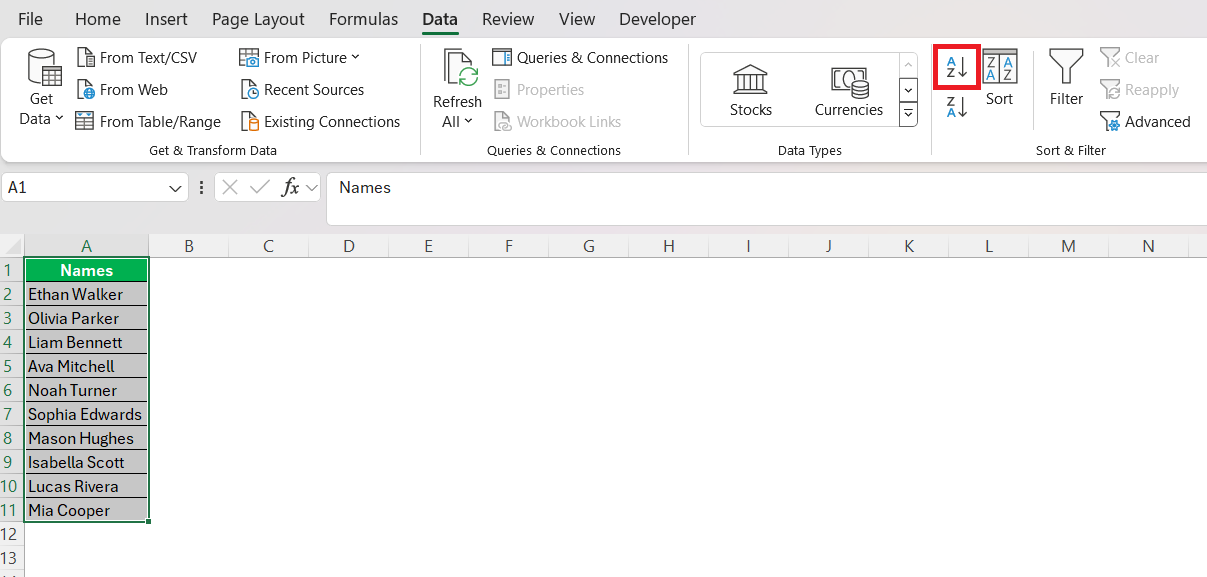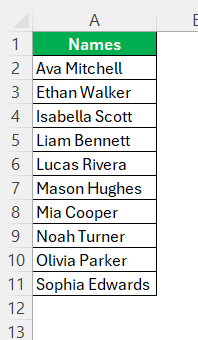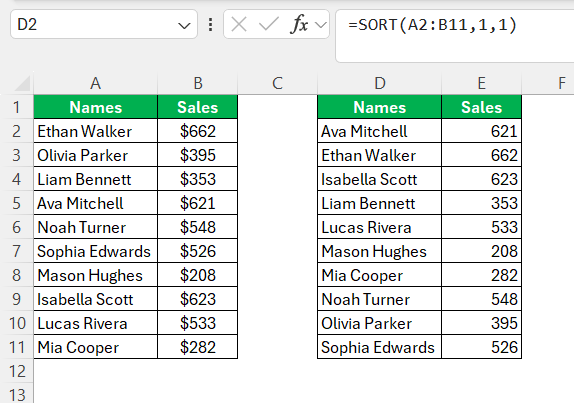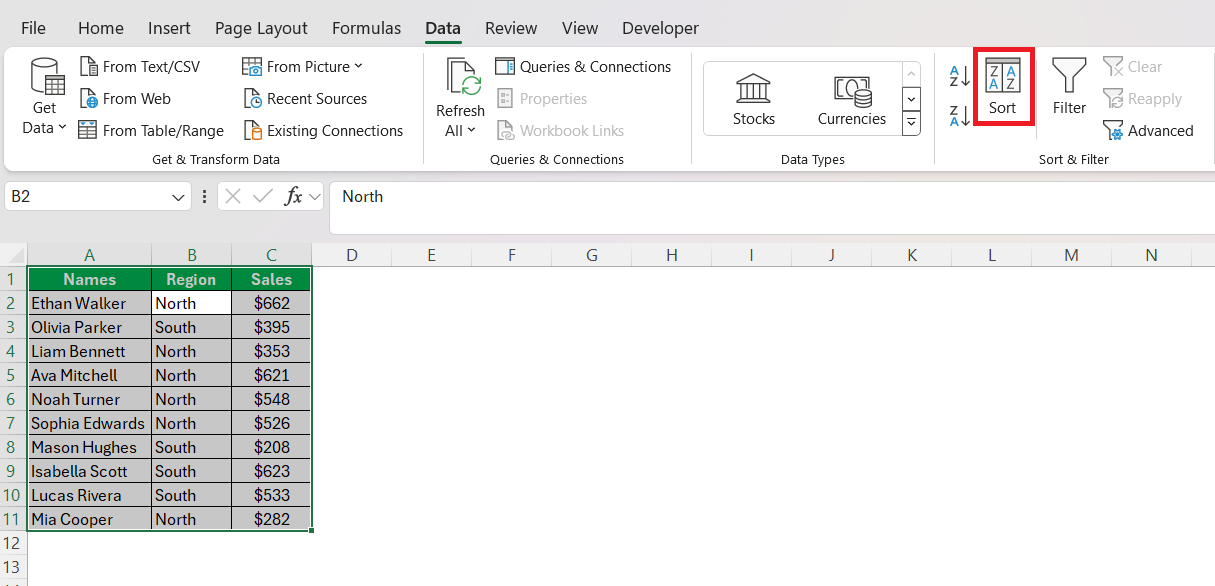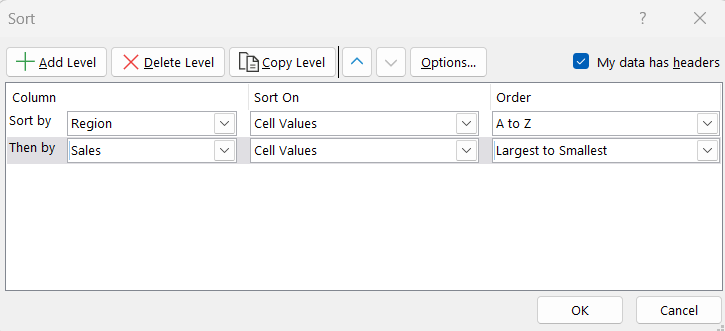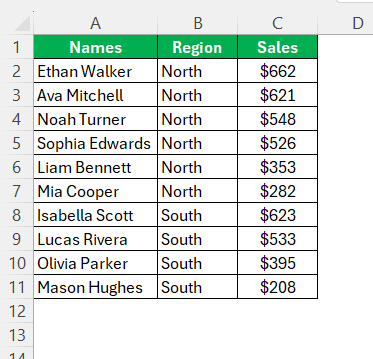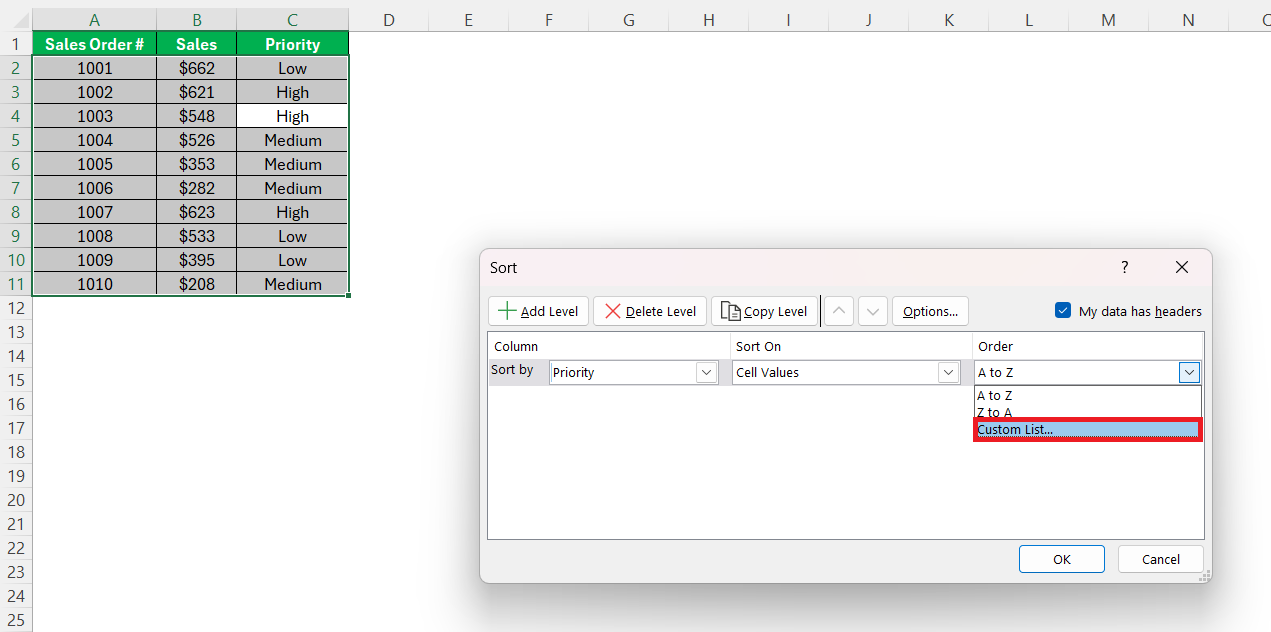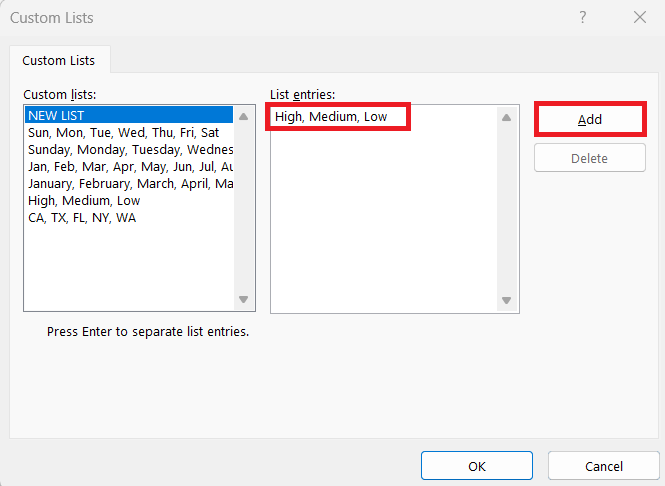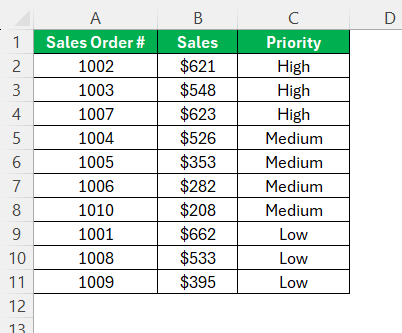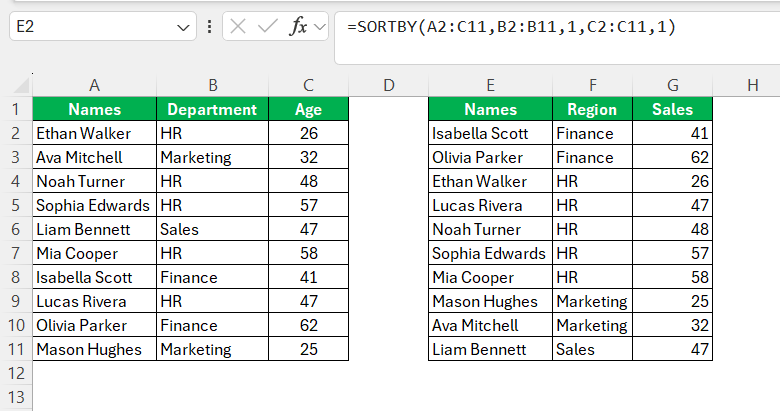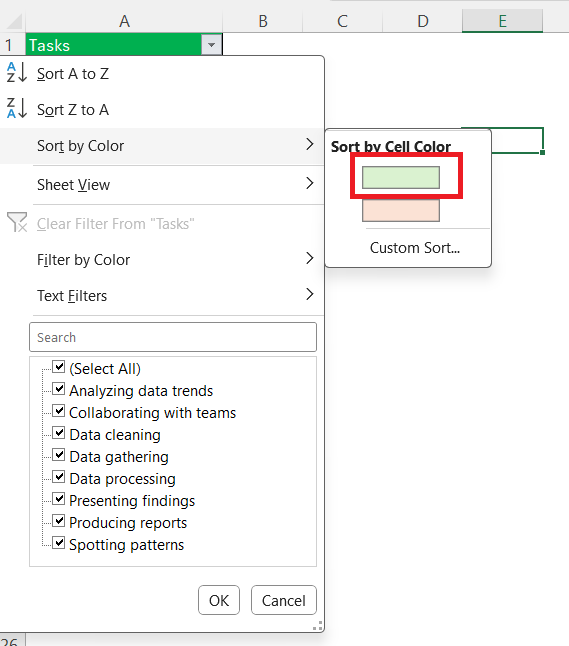Sorting data in Excel is a fundamental skill that helps users organize and analyze information efficiently. Whether you’re working with numbers, text, or dates, Excel provides powerful sorting tools to arrange data based on your needs. This article will guide you through various methods of sorting data in Excel, ensuring you can easily manage and retrieve insights from your datasets.
Key Takeaways:
- Sorting Enhances Analysis: Sorting helps uncover patterns and make complex datasets more manageable for better decision-making.
- Boosts Data Management: Sorting organizes data efficiently, reducing search time and increasing productivity.
- Multiple Column Sorting: Sorting by multiple columns refines data organization, allowing for complex hierarchical views.
- Custom Sorting: Custom sort criteria, such as non-alphabetical lists, provide flexibility in managing unique datasets.
- Dynamic Array Functions: Functions like SORTBY offer advanced sorting capabilities, including sorting by multiple levels or randomization.
Table of Contents
Introduction to Excel Sort
Enhancing Data Analysis with Sorting
As I delve into Excel’s robust features, sorting stands out as an indispensable tool for enhancing data analysis. It’s intriguing to explore how such a simple action can unlock deeper insights and organize complex arrays of information.
Sorting aligns data into a coherent structure, making it more digestible and revealing patterns that we might otherwise miss. Through sorting, we can elevate the analytical process and bring a sharper focus to our datasets, paving the way for more informed decision-making.
The Role of Sort in Efficient Data Management
The role of the sort function in efficient data management cannot be overstated. We become akin to digital architects, structuring our data into frameworks that serve our analytic aspirations. With the click of a button, we can transform a chaotic jumble of numbers, dates, and texts into ordered sequences that enhance clarity and allow us to pinpoint anomalies or deduce trends.
This level of organized output not only streamlines our workflow but can significantly reduce the time spent searching for specific data points, thereby boosting overall productivity. Moreover, when data is sorted logically, it contributes to the accuracy of subsequent operations, such as data visualization or statistical analysis, which rely on orderly data as their foundation.
Define Sort in Excel
Basic Examples of Single Column Sorting
Getting into the practical applications, let’s kick off with single-column sorting. This is the bread and butter of data organization – straightforward yet powerful, and often used when we find ourselves staring down a column teeming with data in disarray.
Imagine a scenario where I have a spreadsheet filled with customer names that need to be alphabetized. It’s as simple as selecting the column, navigating to the ‘Data’ tab, and clicking the ‘Sort A to Z’ button for an ascending order.
These essential steps transform what might be a disorienting collection of data points into a neatly organized list, thus enhancing data readability and manageability with minimal fuss.
Understanding the SORT Function Syntax
To harness the full potential of Excel’s SORT function, we must first understand its syntax. This function is formatted as =SORT(array, [sort_index], [sort_order], [by_col]).
- array: The range or array to sort.
- [sort_index] (Optional): The column or row to sort by. Defaults to the first column or row.
- [sort_order] (Optional): The order to sort in—
1for ascending (default) and-1for descending. - [by_col] (Optional): Logical argument specifying whether to sort by columns (
TRUE) or rows (FALSE, default).
Using this function efficiently translates our data into an ordered array that dynamically updates, thus reflecting any changes in our data set instantaneously.
Example: =SORT(A2:B10, 1, 1)
This sorts the range A2:B10 in ascending order based on the first column.
Advancing Your Skills with Multi-Level Sorting
Sorting by Multiple Columns
When managing more intricate datasets, sorting by multiple columns is a method we can apply to refine our data organization further. This is where Excel truly showcases its prowess, allowing us to layer our sorting to reflect complex hierarchies or relationships within the data.
Here’s how we approach it: Begin by selecting the range that includes the columns you’d like to sort. Then, from the ‘Data’ tab, open the ‘Sort’ dialog box.
You’ll start by adding a level for each column you want to include in your multi-tier sort. For each level, specify the column, sort order, and whether to sort numbers, text, or dates.
Here, I have sorted the data first by region in alphabetical order and, within each region, by sales figures in descending order.
This approach hands me a tailored view that first groups data geographically then shows me the highest performers in each region—a crucial insight for regional sales analyses.
Custom Sorting Techniques
As I dig deeper into Excel’s adaptability, I find custom sorting techniques invaluable for datasets that don’t conform to traditional alphabetical or numerical orders. By defining our own criteria, we can tailor Excel to make sense of data as per our unique logic hierarchy, providing immense flexibility in data presentation.
To illustrate, let’s say I’m working with a set of priorities labeled ‘High’, ‘Medium’, and ‘Low’. A standard sort would alphabetize these, which isn’t useful for urgency-based planning. Instead, I instruct Excel to follow my custom sequence. I do this by selecting my data, going to ‘Sort,’ and choosing ‘Custom List’ under the order field.
Here, I can input my sequence: High, Medium, Low.
With this setup, my data is now aligned with the practical needs of my project management.
The ability to craft these custom lists for sorting empowers me to navigate data in a way that mirrors the real-world hierarchy, thereby enhancing the decision-making process and offering easier interpretation across diverse datasets.
Dynamic Sorting with New Array Functions
Leveraging SORTBY for Advanced Scenarios
When it comes to orchestrating complex data arrangements, the SORTBY function emerges as a particularly nifty tool in my Excel utility belt. Like a maestro leading an orchestra, I use SORTBY to direct my data with precision across multiple levels and dimensions.
Permit me to set the scene with an example: Say I have a dataset that includes employees’ names, departments, and ages. If I wished to neatly organize this data so that the departments are alphabetized, and within each department, employees are sorted by age in ascending order, SORTBY becomes my go-to function. The magic happens with a formula like this: =SORTBY(data, departments_column, 1, ages_column, 1).
This streamlined approach results in a two-dimensional sort, perfectly aligning my data to reflect the exact order of relevance I intended. It’s the elegant solution for when standard single-level sorting just doesn’t cut the mustard.
Special Sort Operations to Explore
Sorting by Color and Conditional Formatting
Excel’s capability to sort by color and conditional formatting adds a layer of visual management to data organization. When visual cues like cell or font color come into play, it allows me to categorize and prioritize data based on these colors, beyond the traditional text or number-based sorting.
For instance, if a spreadsheet highlights overdue tasks in red and upcoming tasks in green, sorting by these colors groups them respectively. Here’s a practical walkthrough: I first apply a filter to the column header, right-click on it, and select ‘Sort by Color’ to segregate the colored cells accordingly.
This process is visually intuitive and immensely useful for quick data assessment based on visual indicators.
FAQs on How to Use the Sort Function in Excel
What is a sort in Excel?
A sort in Excel is a powerful feature that allows us to reorder data in a specific sequence, making it easier to analyze. We can sort data alphabetically, numerically, by date, or even based on custom criteria like colors or icons, which can be extremely useful for organizing large sets of data efficiently.
How Can I Perform a Random Sort in Excel?
To perform a random sort in Excel, we can use the SORTBY function in conjunction with RANDARRAY. By generating a random array of numbers corresponding to our data range and then sorting by that array, we shuffle our data set into a random order, offering a simple yet effective method for randomization.
What Should I Do When My Data Isn’t Sorting Correctly?
If our data isn’t sorting correctly, we should verify data formats and consistency, ensure no hidden rows or pre-applied filters, and check for merged cells, as they can interfere with the sorting process. By addressing these factors, we can usually resolve most sorting issues.
Can I Sort a Range Within a Larger Range Without Mixing Data?
Yes, we can sort a range within a larger range without mixing data. To accomplish this, we need to carefully select only the cells we’d like to sort. I ensure that all related data in rows or columns is included in the selection. Then, by using the ‘Sort’ dialog box, we can apply sorting to just that specific range, keeping the rest of our data intact.
How Does Sorting Differ from Filtering in Excel?
Sorting and filtering are both techniques for managing data in Excel, but they serve different purposes. Sorting rearranges data based on specific criteria such as alphabetical or numerical order, allowing us to view data in a sequence. Filtering, on the other hand, conceals data that doesn’t meet certain criteria, letting us focus on a particular subset without altering the dataset’s order. Both enhance data analysis, but they manipulate the data view in fundamentally different ways.
John Michaloudis is a former accountant and finance analyst at General Electric, a Microsoft MVP since 2020, an Amazon #1 bestselling author of 4 Microsoft Excel books and teacher of Microsoft Excel & Office over at his flagship MyExcelOnline Academy Online Course.

